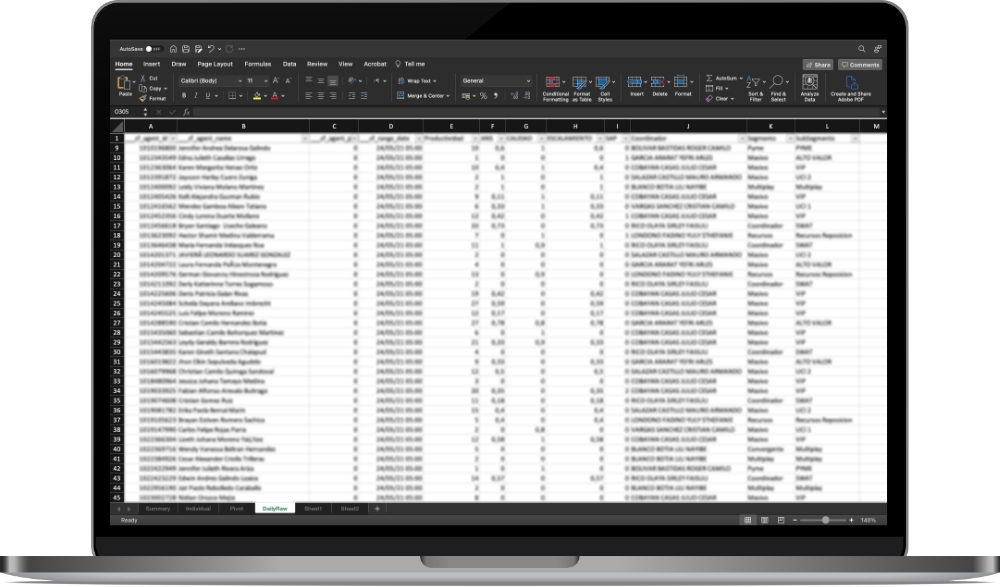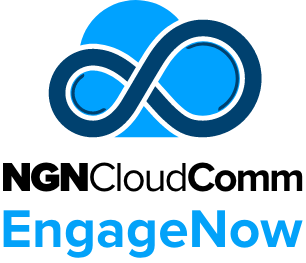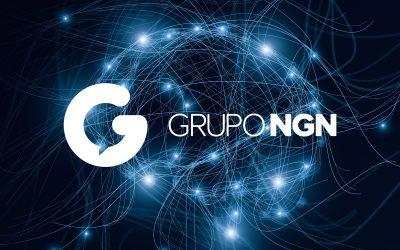
Last week I had a training meeting with a long time NGNInsights customer for a block of newly hired managers. These meetings usually go in one of two directions: A good training involves a number of specific questions as users dig into the gamification platform and want tips on how to make the most of the powerful tool. On the other end of the spectrum sometimes you get a quiet and uninvolved audience that leaves you feeling like the Economics Teacher played by Ben Stein – “Bueller…”. Read on to see why knowing is half the battle in gamification.
Click here if you prefer to jump down to the TL;DR summary of the article.

NGNInsights Training Call
In spite of my nervous nature, the training went great. It was a combination of supervisors already familiar with NGNInsights and a number of new supervisors. There was a great mix of questions and we ended up running a few minutes past the scheduled time. (Which I had already pre-approved with the general manager before the meeting – I am a stickler for keeping to time commitments).
Along with the usual “I can’t log in” password reset questions, there were some questions on how to set up specific filters. Then there was some excitement across the team to make use of the Achievements and Points Systems to augment the performance tracking and scoring they are already doing.
The best question and learning opportunity of the meeting happened when a new supervisor asked “This occupancy number doesn’t look right – how is this agent only at 45%?”
Earlier in my career, these types of questions would stress me out as I would worry about either a bad data API connection or an incorrect formula. But over time I have realized that these questions are always learning opportunities and 9/10 if not 10/10 times the data is correct.
Being Aware of Data Results is the First Step in Gamification

Data awareness is a simple concept that is easy to ignore or not recognize its importance. Even if, like me, you grew up watching GI Joe cartoons after school! Knowing is half the battle in gamifcation. Any successful gamification technique requires, at its heart, access to and awareness of, data results. This supervisor was making perfect use of the NGNInsights platform by recognizing an agent at only 45% occupancy and wanted to verify the data before taking any action. As I started to dig into the details of the Occupancy data and calculation to determine whether or not the value was correct, another supervisor had already solved the issue. “This agent only started their shift an hour ago and they have been in required weekly training for 35 minutes – so the 45% occupancy number is correct and makes sense.”
Now That You Have Data Access - What Do You Do With It?
So we have an agent with a very low occupancy number and the reason for the number makes sense. This agent started their shift by spending most of their first hour in training. Do we need to take any action? Reach out to the agent and nudge them about the low occupancy? Maybe not the best idea – the agent didn’t have any choice or control over the number as they logged in on time and had to go to their training. Look at changing the training schedule? Possibly, but scheduling can be such a headache and no matter where you schedule mandatory training – some agents are going to have it at the beginning of their shift and come out of the training with a low occupancy number. What about doing nothing? Let’s talk about why this might be the best course of action!
Data With NGNInsights vs Data Without NGNInsights


With NGNInsights, this agent comes out of their training and has an open feedback look with their tile and sees their occupancy in red because its only at 45%. The agent isn’t worried about it because they know they just got out of training and once one the phone for an hour or two, the occupancy data will move from yellow to green. But the agent does realize that because of the training, they need to be careful and make sure that they don’t spend extra offline time and fail to get the occupancy where it needs to be.
Without NGNInsights, neither the supervisor nor the agent is certain to see the low occupancy number after the training is over. Unaware of the 45% value, this agent may allow themselves to take a extra few minutes during their lunch or break times or may log out of the call queue without realizing they need to be on their game to make sure the occupancy result gets to green. By just knowing the occupancy data and having the green/yellow/red break down in real time, agents are empowered to self correct their behavior. I went back to check and this agent ended their shift with 72% occupancy putting them solidly in the green for the shift. Knowing is half the battle in gamification.

Real Results and Improvements Using NGNInsights
Upsell Rate:
A BPO client providing sales and support for a national cable TV and internet provider had an interesting problem: They have an upsell product that they were trying to sell to existing customers because it provides an ample margin. Our customer was only able to upsell the product in 5% of their calls. No matter what supervisors/managers tried had any effect on increasing the upsell percentage. After consulting with us we asked them, why not show the upsell data in real time to the agents and let the agents know how the upsell percentage affects their bonuses? Upon adding the Upsell KPI and bonus data to the NGNInsights tile, our customer saw a significant increase in upsell rate moving from an average of just over 5% to over 19.5% in the first month alone!
This increase came without any training, script changes, or extra spiffs from the cable TV client. Because this BPO had already developed a strong Management Experience (MX) and Agent Experience (AX) the impressive CX change was able to happen so quickly from a small adjustment and achieve a more than 400% increase from the original 5% average.
Average Handle Time:
A major auto insurance club used NGNInsights with the goal of decreasing the total handle time of each call taken from drivers needing assistance. By having the data in front of them, agents decreased their Average Handle Time by 27 seconds per call. That might not sound like a lot – but consider this company averaged more than 50,000 calls per day so that 27 seconds added up to saving the company more than $1,080,000 per month!
Adherence:
California Regional MLS, the largest and most recognized Multiple Listing Service in the world used NGNInsights to improve agent schedule adherence. By putting the adherence data in front of agents overall adherence improved from 82.2% to 88.3%. The minimum monthly adherence numbers improved from 51.1% to 78.2% a 53.3% improvement! Knowing is half the battle in gamification.
What About Improvement From Additional Gamification?
Having an open feedback loop of data results between each agent and their supervisors is the first and most simple gamification and as you have seen in this post it generates significant results. NGNInsights comes with a number of additional gamification features including:
- Leaderboards
- Awards
- Achievements
- Points
- Store and Coins
Using these additional gamification enhancements customers see even more significant performance improvements and sustained motivation with their agents and supervisors and can incorporate healthy team or individual competition to their Contact Center.
Using Leaderboards and Awards for Competitive Awareness
NGNInsights leaderboards allow supervisors and agents to add a bit of competition to each day. Contact Centers can select any data point connected to NGNInsights to generate a leaderboard and display results. Insights with benchmarks will display a breakdown of Green/Yellow/Red as well as a detailed list by the actual results. Whether the data is “higher the better” or “lower the better”, leaderboards automatically adjust to show the best performing agents on top.
Awards allow managers and supervisors the flexibility to give kudos to any agent in the moment. Agents can receive an award any time during or after their shift with a nice message and a fun digital badge or meme that they stays in their account moving forward. This is the perfect option to recognize an agent that just got off a difficult call that they handled well.
Using Achievements for Automated Data Results
Achievements are a set and forget logic system in NGNInsights that allows you to reward agents who meet specific performance levels. You are also able to reward agents for maintaining consistent performance over a period of time.
An achievement can be as simple as being green for a selected insight. Every shift that an agent is green for say their Average After Call Work time they earn the achievement. Agents are able to see the number of repeat times they earn any achievement. Add some complexity by calculating an achievement for an entire week or month or by having a streak of consecutive successful shifts to earn the achievement. Having green ACW for 10 straight shifts for example.
Next achievements can take on specific logic and don’t have to be limited to just hitting green. For example a Contact Center may use 30 seconds or lower as the benchmark for ACW to be green. But they want to give an achievement for having ACW under 20 seconds.
See how one customer has used Achievements to automate their monthly commission program.
Using Points for Data Awareness and Analysis
Points in NGNInsights allows supervisors to compare agent performance across various factors such as different teams, part time vs full time, or even different skills. Agents can use the points system as a daily mesauring stick of their performance.
Insights drive the NGNInsights points system. The better agents perform in the most important areas, the more points they earn. Contact Centers can set up multiple point systems across different teams using different insights. For example the points system for the chat team can be different from the inbound call team and different from the email team. Knowing is half the battle in gamification. When set up correctly, you can use the points system to compare agents across your different teams and skill sets.
Calculating Points/Hour by dividing the total points scored by login duration allows you to have a metric where you can compare part time agents to full time agents. You can also compare agents intra day whehter they are about to finish up from the morming shift or just started the swing shift.
Using the Store and Coins for Motivation and Engagement
Providing fun and valuable items for agents to purchase is a great way to reward their performance and to keep them motivated. Knowing is half the battle in gamification. We know that customers making use of the Store and Coins system report higher agent usage and higher satisfcation with NGNInsights.
We have customers with “spiff” budgets that range from several thousand dollars a quarter to no budget at all and there are creative ways to make the store work for everyone. For customers without any spiff budget items like a VIP parking pass, extra break or lunch time coupons, or early off on Fridays. Even the customers who use their budgets to inlcude items like gift cards or TVs often include non-cash store items as well.
Agents can recieve coins to purchase store items through an exchange rate receiving coins on a per point basis each day as well as earning coins from completing achievements. Finally supervisors and include a batch of bonus coins to an agent as part of any award.
TL;DR Summary - Knowing is Half the Battle in Gamification
- Knowing is half the battle in gamification. Simply seeing results is a powerful form of gamification
- Open feedback loops and data awareness is a powerful driver to improve performance
- Examples
- Agent moved their same day Occupancy from 45% to over 70%
- National Cable TV and Internet provider increased Upsell rate from 5% to over 19% in just the first month
- Major auto insurance club decreased Average Handle Time by 27 seconds per agent per call saving more than $12,000,000 annually
- Leaderboards are an easy way to add competition to your Contact Center
- Awards give managers the flexibility to recognize agents on the spot as well as after the fact
- Achievements are a “set and forget” logic system to reward superior performing agents
- Achievements can be rewarded for a day, a week, a month, or for a set streak of consistent performance
- Points let agents compete with themselves and give supervisors a single data point of performance analysis
- Customers who make use of the Store and Coins system are able to reward and motivate their agents and report higher instances of agent engagement and satisfaction






